If you would like to add more datasheets to the comparison table you can still find and add them around the site while browsing, querying or searching Device Specs. Meanwhile you will not lose the comparison table below. Furthermore unnecassary datasheets can be removed by clicking on the "Remove from comparison" buttons (ever more than one item during one page load) but in this case reloading the table will be needed. Then click again on the appropriate header "Compare" button.
|
|
| | | | |
|
Use the following link to refer to this comparison |
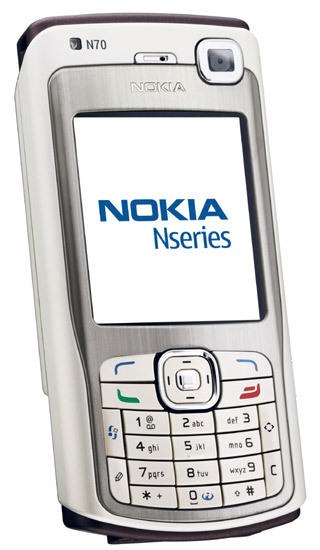
| 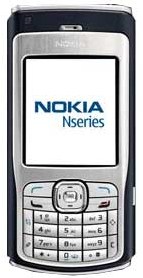
| 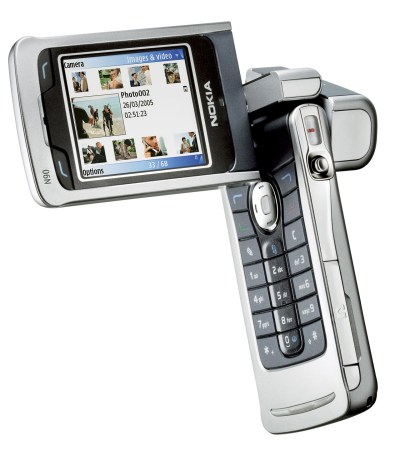
| 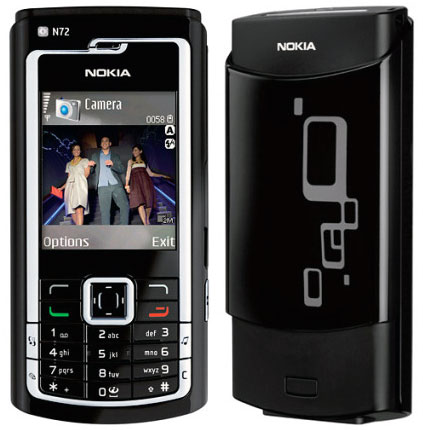
| 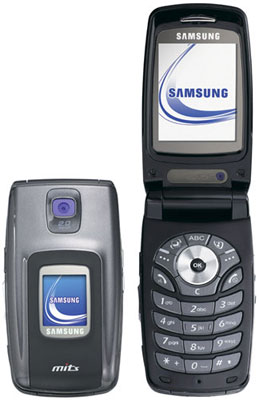
|
|
Remove all |
|  Add to compare Add to compare | |  Add to compare Add to compare | |  Add to compare Add to compare | |  Add to compare Add to compare | |  Add to compare Add to compare |
 Introduction Introduction |
Released |
2005 Sep 28 |
2005 Nov |
2005 Nov 21 |
2006 Jun |
2006 Jun |
Hardware Designer |
Nokia |
Nokia |
Nokia |
Nokia |
Samsung Electronics |
Manufacturer |
Nokia |
Nokia |
Nokia |
Nokia |
Samsung Electronics |
OEM ID |
N70-1 |
N70-5 |
|
|
|
General Extras |
No |
No |
Rotatable screen |
No |
No |
Device Category |
Smartphone |
Smartphone |
Smartphone |
Smartphone |
Smartphone |
 Physical Attributes Physical Attributes |
Width |
53 mm |
53 mm |
51 mm |
53.2 mm |
48 mm |
Height |
108.8 mm |
108.8 mm |
112 mm |
108.8 mm |
89 mm |
Depth |
22.8 mm |
22.8 mm |
24 mm |
21.8 mm |
23.5 mm |
| Dimensions
| 2.09x4.28x0.90 inches |
2.09x4.28x0.90 inches |
2.01x4.41x0.94 inches |
2.09x4.28x0.86 inches |
1.89x3.50x0.93 inches |
Mass |
126 g |
125 g |
173 g |
124 g |
115 g |
|
4.44 ounces |
4.41 ounces |
6.1 ounces |
4.37 ounces |
4.06 ounces |
 Software Environment Software Environment |
Platform |
Symbian |
Symbian |
Symbian |
Symbian |
Symbian |
Operating System |
Symbian OS 8.1 Series 60 2nd Edition 2.8 |
Symbian OS 8.1 Series 60 2nd Edition 2.8 |
Symbian OS 8.1 Series 60 2nd Edition 2.8 |
Symbian OS 8.1 Series 60 2nd Edition 2.8 |
Symbian OS 8.1 Series 60 2nd Edition 2.8 |
|
Feature Pack 3 (v2.0539) |
Feature Pack 2 |
Feature Pack 3 |
Feature Pack 3 |
Feature Pack 3 |
 Application processor, Chipset Application processor, Chipset |
CPU Clock |
220 MHz |
220 MHz |
220 MHz |
220 MHz |
192 MHz |
CPU |
Texas Instruments OMAP 1710, 2004, 32 bit, single-core, 32 Kbyte I-Cache, 16 Kbyte D-Cache |
Texas Instruments OMAP 1710, 2004, 32 bit, single-core, 32 Kbyte I-Cache, 16 Kbyte D-Cache |
Texas Instruments OMAP 1710, 2004, 32 bit, single-core, 32 Kbyte I-Cache, 16 Kbyte D-Cache |
Texas Instruments OMAP 1710, 2004, 32 bit, single-core, 32 Kbyte I-Cache, 16 Kbyte D-Cache |
Texas Instruments OMAP 5910, 2004, 32 bit, single-core, 16 Kbyte I-Cache, 8 Kbyte D-Cache, 130 nm |
 Operative Memory Operative Memory |
RAM Type |
SDRAM |
SDRAM |
SDRAM |
SDRAM |
SDRAM |
RAM Capacity (converted) |
32 MiB RAM |
32 MiB RAM |
32 MiB RAM |
64 MiB RAM |
64 MiB RAM |
|
|
|
|
50 MiB user accessible RAM |
|
 Non-volatile Memory Non-volatile Memory |
Non-volatile Memory Interface |
Yes |
Yes |
Yes |
Yes |
Yes |
Non-volatile Memory Capacity (converted) |
48 MiB ROM |
48 MiB ROM |
64 MiB ROM |
48 MiB ROM |
128 MiB ROM |
|
22 MiB total user storage |
22 MiB total user storage |
30 MiB total user storage |
20 MiB total user storage |
70 MiB total user storage |
 Display Display |
Display Diagonal |
54.5 mm |
54.5 mm |
54.5 mm |
54.5 mm |
54 mm |
|
2.1 inch |
2.1 inch |
2.1 inch |
2.1 inch |
2.1 inch |
Resolution |
176x208 |
176x208 |
352x416 |
176x208 |
176x208 |
Horizontal Full Bezel Width |
17.8 mm |
17.8 mm |
15.8 mm |
18 mm |
13.12 mm |
Display Area Utilization |
25.4% |
25.4% |
25.6% |
25.3% |
33.7% |
Pixel Density |
127 PPI |
127 PPI |
254 PPI |
127 PPI |
128 PPI |
Display Type |
Color TN-TFT LCD display |
Color TN-TFT LCD display |
Color TN-TFT LCD display |
Color TN-TFT LCD display |
Color TN-TFT LCD display |
Number of Display Scales |
262144 |
262144 |
262144 |
262144 |
262144 |
| Secondary Display Diagonal |
|
|
39.5 mm |
|
25 mm |
|
|
|
1.6 inch |
|
1 inch |
Secondary Display Resolution |
|
|
128x128 |
|
80x64 |
| Secondary Display Pixel Density (dot pitch) |
|
|
116 PPI |
|
104 PPI |
| Secondary Display Type |
No |
No |
Color TN-TFT LCD 2nd display |
No |
Color PM-OLED 2nd display |
| Secondary Number of Display Colors/Scales
| |
|
65536 |
|
65536 |
 Graphical Subsystem Graphical Subsystem |
 Audio/Video Interfaces Audio/Video Interfaces |
 Audio Subsystem Audio Subsystem |
Microphone(s) |
mono |
mono |
mono |
mono |
mono |
| Loudspeaker(s) |
mono |
mono |
mono |
mono |
stereo |
| Audio Output |
Proprietary |
Proprietary |
Proprietary |
Proprietary |
2.5mm |
 Cellular Phone Cellular Phone |
Supported Cellular Bands |
GSM900,
GSM1800,
GSM1900,
UMTS2100 (B1) bands |
GSM900,
GSM1800,
GSM1900 bands |
GSM900,
GSM1800,
GSM1900,
UMTS2100 (B1) bands |
GSM900,
GSM1800,
GSM1900 bands |
GSM850,
GSM900,
GSM1800,
GSM1900,
UMTS2100 (B1) bands |
Supported Cellular Data Links |
CSD,
HSCSD,
GPRS,
GPRS C10,
EDGE,
EDGE MSC10,
UMTS data links |
CSD,
HSCSD,
GPRS,
GPRS C10,
EDGE,
EDGE MSC10 data links |
CSD,
HSCSD,
GPRS,
GPRS C10,
EDGE,
EDGE MSC10,
UMTS data links |
CSD,
HSCSD,
GPRS,
GPRS C10,
EDGE,
EDGE MSC10 data links |
CSD,
GPRS,
GPRS C10,
UMTS data links |
SIM Card Slot |
Mini-SIM (2FF) |
Mini-SIM (2FF) |
Mini-SIM (2FF) |
Mini-SIM (2FF) |
Mini-SIM (2FF) |
Complementary Phone Services |
Voice transmission,
Vibrate,
Speakerphone |
Voice transmission,
Vibrate,
Speakerphone |
Voice transmission,
Vibrate,
Speakerphone |
Voice transmission,
Voice speaker,
Vibrate,
Speakerphone |
Voice transmission,
Vibrate,
Speakerphone |
SAR (head) |
0.500 W/kg |
0.500 W/kg |
0.290 W/kg |
|
0.440 W/kg |
 Secondary Cellular Phone Secondary Cellular Phone |
 Control Peripherals Control Peripherals |
Keyboard |
Built-in numeric |
Built-in numeric |
Built-in numeric |
Built-in numeric |
Built-in numeric |
| Number of keys
| 20 |
20 |
19 |
20 |
20 |
Directional Pad |
5-way |
5-way |
5-way |
5-way |
5-way |
 Communication Interfaces Communication Interfaces |
Expansion Interfaces |
MMCmobile |
MMCmobile |
MMCmobile |
MMCmobile |
TransFlash,
microSD |
USB |
USB 2.0 |
USB 2.0 |
USB 2.0 |
USB 2.0 |
USB 1.1 |
|
USB FS (12 Mbps) |
USB FS (12 Mbps) |
USB FS (12 Mbps) |
USB FS (12 Mbps) |
USB FS (12 Mbps) |
| USB Connector
| Proprietary |
Proprietary |
Proprietary |
Proprietary |
Proprietary |
Bluetooth |
Bluetooth 2.0 |
Bluetooth 2.0 |
Bluetooth 2.0 |
Bluetooth 2.0 |
Bluetooth 1.2 |
IR |
No |
No |
No |
No |
IrDA 1.1 |
|
No |
No |
No |
No |
115200bit/s (SIR/CIR) |
 Multimedia Broadcast Multimedia Broadcast |
FM Radio Receiver |
FM radio (88-108 MHz) |
FM radio (88-108 MHz) |
No |
FM radio (88-108 MHz) |
No |
 Satellite Navigation Satellite Navigation |
 Primary Camera System Primary Camera System |
Camera Placement |
Rear |
Rear |
Rear |
Rear |
Rear |
Camera Image Sensor |
CMOS |
CMOS |
CMOS |
CMOS |
CMOS |
Number of effective pixels |
1.9 MP camera |
1.9 MP camera |
1.9 MP camera |
1.9 MP camera |
1.9 MP camera |
Aperture (W) |
|
|
f/2.90 |
|
|
Zoom |
|
|
1.0 x optical zoom |
|
|
Focus |
No |
No |
CD AF |
No |
No |
Video Recording |
352x288 pixel |
352x288 pixel |
352x288 pixel |
352x288 pixel |
352x288 pixel |
|
|
|
25 fps |
15 fps |
15 fps |
Flash |
single LED |
single LED |
single LED |
single LED |
single LED |
Camera Extra Functions |
No |
No |
Macro mode |
No |
No |
 Secondary Camera System Secondary Camera System |
Secondary Camera Placement |
Front |
No |
Front |
No |
Front |
Secondary Camera Sensor |
CMOS |
No |
CMOS |
No |
CMOS |
Secondary Camera Number of pixels |
0.3 MP sec. cam |
|
0.3 MP sec. cam |
|
0.3 MP sec. cam |
Secondary Video Recording |
|
|
|
|
176x144 pixel |
 Built-in Sensors Built-in Sensors |
 Ingress Protection Ingress Protection |
Protection from solid materials |
Yes |
Yes |
Yes |
Yes |
Yes |
Protection from liquids |
Yes |
Yes |
Yes |
Yes |
Yes |
 Power Supply Power Supply |
Battery |
Li-ion |
Li-ion |
Li-ion |
Li-ion |
Li-ion |
|
removable |
removable |
removable |
removable |
removable |
|
1-cell |
1-cell |
1-cell |
1-cell |
1-cell |
Nominal Battery Capacity |
850 mAh battery |
850 mAh battery |
760 mAh battery |
850 mAh battery |
|
Estimated Battery Life |
10.0 hours |
10.0 hours |
7.0 hours |
10.0 hours |
|
 Geographical Attributes Geographical Attributes |
Market Regions |
Europe,
Western Europe |
Europe,
Western Europe |
Europe,
Western Europe |
Europe,
Western Europe |
No |
Mobile Operator |
|
|
|
|
|
 Datasheet Attributes Datasheet Attributes |
Data Integrity |
Final |
Final |
Preliminary |
Final |
Incomplete |
Added |
2007-11-06 23:33 |
2007-11-07 00:00 |
2007-11-07 00:28 |
2007-11-07 21:25 |
2008-01-10 16:06 |




